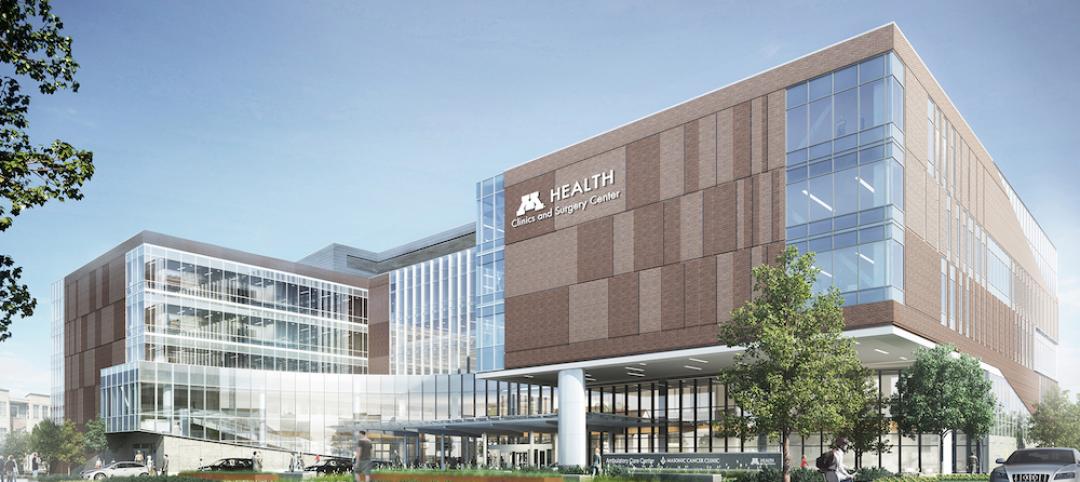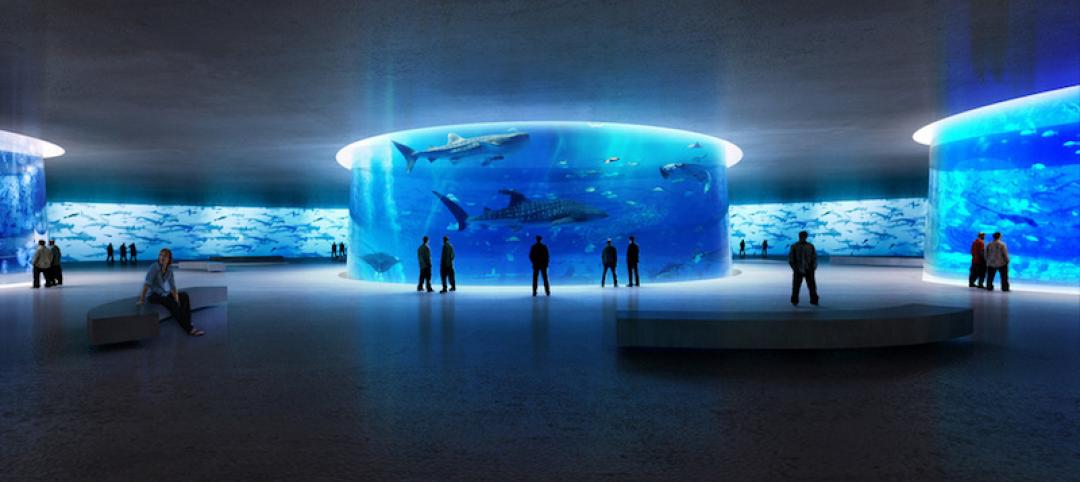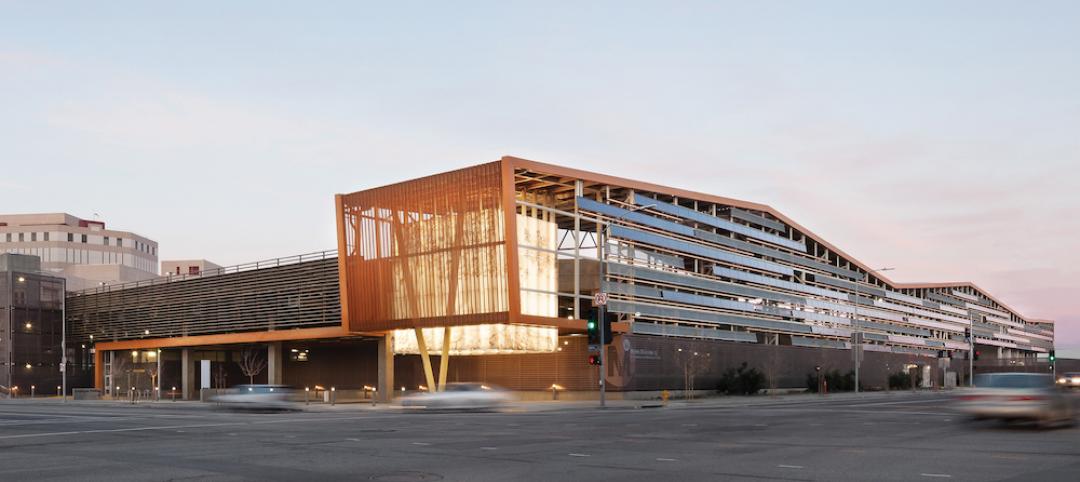HKS Architects, Inc., a national architectural firm with 28 U.S. and international offices, has formed the HKS Science & Technology practice.
Specializing in the planning and design of highly technical building types, HKS’s Science & Technology practice offers the broadest range of services available to the academic and biomedical research, biotechnology, pharmaceutical and medical device community, including laboratory programming, planning and design, strategic science planning and laboratory equipment planning.
“We know that the continuum of new science and emerging technologies is evolving with ever-increasing momentum,” said Ralph Hawkins, president and CEO of HKS, Inc. “Offering science and technology services to our clients is part of HKS’s strategy to provide the most comprehensive services to meet their constantly changing and evolving needs.”
H. Michael Smith, AIA, LEED AP, senior vice president, is HKS’s National Science & Technology Practice Leader. With more than 27 years of experience in a wide range of renovation, adaptive reuse and new construction projects, Smith has focused his entire career on the design of science and technology building types. Working for clients in the corporate, institutional, academic and government market sectors, he has directed, managed, programmed and designed many notable projects, including academic and biomedical teaching and research laboratories, biotechnology and pharmaceutical research and production facilities, cleanrooms for microelectronics and medical device manufacture, and animal research facilities, among others.
For the past decade, Smith has held principal-level, science-practice leadership positions at some of the nation’s largest architectural firms and has been responsible for the development of such notable science buildings as the Wallis Annenberg Research Center at the House Research Institute in Los Angeles, Calif.; the Arnold and Mabel Beckman Cancer Immunotherapeutics and Tumor Immunology Building at the City of Hope National Medical Center in Duarte, Calif.; the Donald P. Shiley Center for Science & Technology at the University of San Diego in San Diego, Calif.; and the Dana & David Dornsife Cognitive Neuroscience Imaging Center at the University of Southern California in Los Angeles, Calif.
Demonstrating the HKS Science & Technology practice’s commitment to achieving excellence in science and technology facilities design, the firm acquired world-renowned laboratory planning firm Earl Walls Associates, which will be rebranded as Earl Walls Consultancy, a division of HKS. With more than 2,500 laboratories to its credit, totaling over 200 million gross square feet, Earl Walls Associates grew from the 1962 collaboration among Dr. Jonas Salk, architect Louis I. Kahn and founder Earl Walls. Together they designed the Salk Institute, which established new milestones for laboratory facilities design. For the past five decades, Earl Walls Associates was integral to the development and innovation of many of the world’s modern laboratory planning concepts, including 22 awarded projects in R&D Magazine’s “Laboratory of the Year” competition.
Ken DeBoer and Ned Michalowski lead the Earl Walls Consultancy, based in San Diego, Calif. DeBoer, with 37 years of experience, is a programmer and planner with a complete understanding of the technical issues involved in highly complex laboratories and their support systems. His portfolio includes facilities for numerous government and academic institutions, ranging from sophisticated national core facilities to instructional laboratories for community colleges. More than 25 years ago, DeBoer began his laboratory planning career working with Earl Walls.
Michalowski has gained varied experience in the programming and design of laboratory facilities for the federal government, academia, private sector and institutional research. He joined Earl Walls in 1985 and has extensive experience providing strategic science planning, programming and design for numerous projects of various sizes, types and complexity. His projects have won awards including R&D Magazine's 1995 “Laboratory of the Year” for Ciba-Geigy's Life Sciences Building.
“DNA genetic coding didn’t exist 20 years ago,” said DeBoer. “Today, scientists are reinventing science as new methods and technologies become available. In turn, we must design facilities to accommodate both existing and future technologies. We speak the language of scientists, offering a distinct blend of technical knowledge and design creativity.”
Examples of innovative science and technology projects include:
- University of Texas, MD Anderson Cancer Center Clinical Research Building, Houston, Texas
- University of Arkansas for Medical Sciences, Biomedical Research Center, Little Rock, Arkansas
- University of Texas Southwestern Medical Center, Clements Advanced Medical Imaging Center, Dallas, Texas
- Brooke Army Medical Center, Institute of Surgical Research, Fort Sam Houston, Texas
- Utah State University, Widtsoe Hall Chemistry Building, Logan, Utah
- Instituto de Diagnóstico y Referencia Epidemiológicos (InDRE), Infectious Disease Laboratories, Mexico City, Mexico
- The Salk Institute for Biological Studies, La Jolla, California
- National Institutes of Health, Mark O. Hatfield Clinical Research Center, Bethesda, Maryland
- Ciba Geigy Pharmaceuticals, Life Sciences Building, Summit, New Jersey
- National Institute of Standards and Technology (NIST), Advanced Measurement Laboratory, Gaithersburg, Maryland
- Genomics Institute of the Novartis Research Foundation, La Jolla, California
- University of Alabama, Shelby Hall Interdisciplinary Science Building, Tuscaloosa, Alabama
- Pacific Northwest Laboratories, Environmental Molecular Sciences Laboratory, Richland, Washington
- University of Wisconsin, Microbial Sciences Building, Madison, Wisconsin
“Science and technology facilities should inspire creativity and innovation, foster collaboration among colleagues and peers, attract and retain the best and brightest talent, and effectively represent an institution’s desired image to the public,” said Smith. “I am passionate about our work and committed to delivering facilities for science that meet the highest expectations of our clients, while respecting their time and budget constraints.” BD+C
Related Stories
Airports | Jun 1, 2016
LaGuardia Airport’s massive redevelopment begins construction
The development consortium has secured financing for the $4 billion project, and signed an operating lease through 2050.
Building Team Awards | Jun 1, 2016
Multifamily tower and office building revitalize Philadelphia cathedral
The Philadelphia Episcopal Cathedral capitalizes on hot property to help fund much needed upgrades and programs.
Building Team Awards | Jun 1, 2016
Central utility power plant takes center stage at UC San Diego Jacobs Medical Center
An undulating roof, floor-to-ceiling glass, and façade scheme give visual appeal to a plant that serves the 10-story medical center.
Architects | May 31, 2016
JLG Architects acquires Minneapolis-based Studio Five Architects
Led by Linda McCracken-Hunt, SFA is one of Minnesota’s oldest woman-owned architecture firms.
Building Team Awards | May 31, 2016
Gonzaga's new student center is a bustling social hub
Retail mall features, comfortable furniture, and floor-to-ceiling glass add vibrancy to the new John J. Hemmingson Center.
Building Team Awards | May 27, 2016
Big police academy trains thousands of New York's finest
The Police Training Academy in Queens, N.Y., consists of a 480,000-sf academic/administration building and a 240,000-sf physical training facility, linked by an aerial pedestrian bridge.
Building Team Awards | May 26, 2016
Cimpress office complex built during historically brutal Massachusetts winter
Lean construction techniques were used to build 275 Wyman Street during a winter that brought more than 100 inches of snow to suburban Boston.
Building Team Awards | May 25, 2016
New health center campus provides affordable care for thousands of Northern Californians
The 38,000-sf, two-level John & Susan Sobrato Campus in Palo Alto is expected to serve 25,000 patients a year by the end of the decade.
Architects | May 24, 2016
Lissoni Architettura’s NYC Aquatrium takes first place in New York City Waterfront Design competition
NYC Aquatrium was selected from among 178 proposals from 40 countries as the winner of Arch Out Loud’s NYC Aquarium & Public Waterfront design competition
Building Team Awards | May 24, 2016
Los Angeles bus depot squeezes the most from a tight site
The Building Team for the MTA Division 13 Bus Operations and Maintenance Facility fit 12 acres’ worth of programming in a multi-level structure on a 4.8-acre site.
















